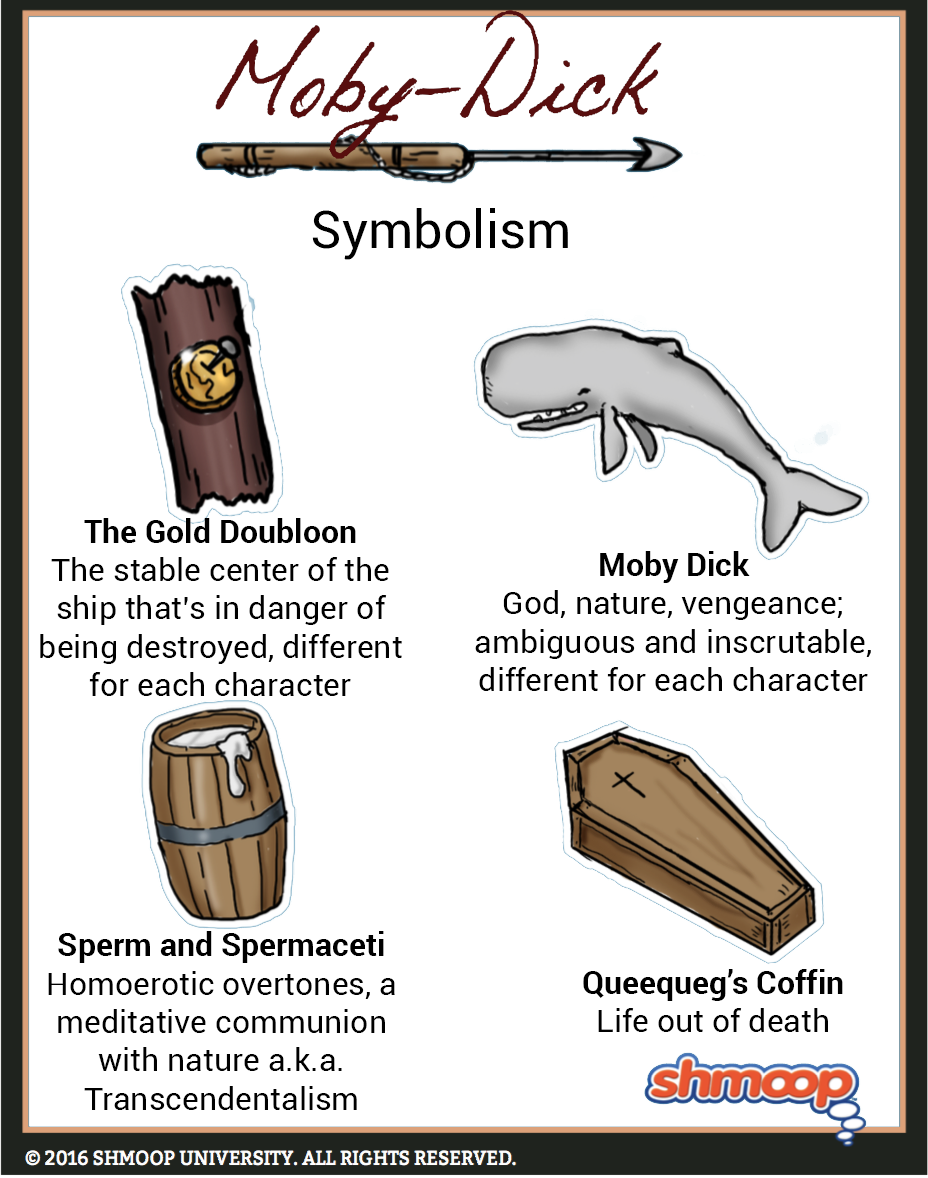Symbolism, Imagery, Allegory

(Click the symbolism infographic to download.)
More Ironic Than A Retro T-Shirt
When Queequeg falls deathly ill with a fever and thinks he’s dying, one of the things that’s most important to him is to have his coffin made, so that he can make sure it’s just perfect. When he recovers, though, it’s just a useful chest to put things in.
And then, suddenly, the Pequod needs an extra life-buoy, and Queequeg offers up the coffin as something that can easily be transformed into one.
Since you're brilliant Shmoop readers, we’re sure you can feel the symbolism and irony fairly sizzling off of this one: something made for a dead body is going to be turned into something that keeps a man from becoming a dead body.
Captain Ahab, no fool himself, is deeply disturbed by the symbolism of having a coffin life-buoy on his ship, but eventually he’s able to convince himself that the coffin helps preserve the immortality of the soul anyway, so it’s okay. And when the life-buoy formally known as coffin is actually the thing that saves Ishmael’s life at the end of the story, we’ve got even more of this life-through-death stuff to deal with.
There’s more to say about this than just that the coffin represents both life and death. For Ishmael, it represents life from death, life out of death. After all, Ishmael survives by clinging onto Queequeg’s coffin in more ways than one. Heck, Queequeg might as well be in the coffin, considering that he dies at the same moment that Ishmael is saved.